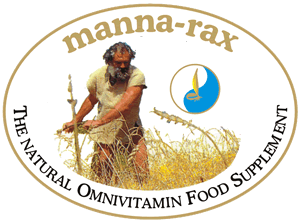
Procedure to Biophoton Measurement
"The measurements are based on the theory of Erwin Schrödinger, proposing that food quality cannot be described in terms of the mixture of components (E. Schrödinger: What is Life ? Cambridge University Press, London 1945).
This "negentropic function" of the food is linked to the capacity of storing light. Consequently when food is kept in its natural state, one can get a fingerprint of the quality.
Biophotonics uses this principles by measuring the delayed luminescence, which is reemitted luminescence of food after a definite illumination. This method is patented in Europe (EP 0430 150B1).
The reemited light emission is registered in complete darkness with the highest possible sensitivity of the photodetector and best possible reproducibility (of only a few percent of the measurement values), in dependence of the time of reemission. This is performed for different wavelengths of the visible range and for white light.
The characteristics of the luminescence relaxation are taken up in form of an adapted analytic function and, for comparable sample, are subjected to a factor analaysis. This is the best existing procedure for describing the capacity of light storage.
In this way it is possible, for example, to show evidence of clear differences of quality, in agreement with our expectation, where all other conventional mehtods fail. (For example: differences between free-range and battery eggs, even after identical food supplu of the hens, in favour of the better quality of the free-range)."
Extract from "Vitaminok és nyomelemek, az életero forrasai" by Dr. Olan Andor.


Wheatgrass capacity to attract biophotons
We use to think that seaweed was the one plant attracting the most biophotons until the research of Lehel Racz & Albert Fritz Popp. Indeed, in Popp's Institute specialized in Biophotons (International Institute of Biophysics in Neuss, Germany), they could research on what plant was able to attract and store the highest quantity of Biophotons.
As seen on these pictures, sprouted wheat of L. Racz attracted about 5 TIMES MORE particules than seaweed !


Pictures Above: photomontage of the sprouted wheat to be analized.
Bottom Left: Wheatgrass. Biophotons are materialized on the pictures by color green and white depending on concentration
Bottom Right: Seaweed attracts less biophotons.
This pictures have been realized with Spectra Infrared Technology.


Wheatgrass and science
Photos on the left: Lehel Racz representing Hungary with Mannarax in Paris at the "European Research and Innovation Exhibition".
Dr Chiu-Nan Lai
Author of “Preventing the cancer metabolism to develop with extracts of sprouted wheat”. Universtity of Texas System Cancer Center. M.D. Anderson Hospital and Tumor Institute.
“Unique results. Let’s hope this will attract the deserved international recognition as soon as possible”
Victoras Kulvinskas
Author of “Survival in the 20th Century, planetary Healers Manual”
“Your vision and product is going to shake Europe where he old field sand tunes are fading away, and the New life is being born which will grow from love, thus from wheatgrass.”
Prof Dr Lous Tucanu
Director and Head Doctor of the Childhood Clinic n°3 in Tenesvar (Romania)
“Thanks to Biogenic Europe Ltd. we could receive this multi-vitamin dietetic product, Mannarax. We have tried and experienced it;
After administering Mannarax to kids suffering from dystrophy, we observed, developed in a very short timeframe, an exceptional tolerance of their metabolism as well as strong anabolic and anti-anemic properties.
We therefore recommend the wider use possible of this product. Indeed its huge amount of vitamins and trace elements highly stimulate the metabolism and favor the process of child development.”

